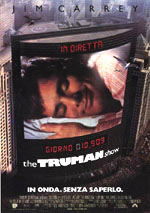The Net icon has no center-it is a bunch of dots connected to other dots-a cobweb of arrows pouring into each other, squirming together like a nest of snakes, the restless image fading at indeterminate edges. The Net is the archetype-always the same picture-displayed to represent all circuits, all intelligence, all interdependence, all things economic and social and ecological, all communications, all democracy, all groups, all large systems. The icon is slippery, ensnaring the unwary in its paradox of no beginning, no end, no center. Or, all beginning, all end, pure center. It is related to the Knot. Buried in its apparent disorder is a winding truth. Unraveling it requires heroism.
(Kevin Kelly, Out of control. The New Biology of Machines, Social Systems and the Economic World, 1995, p.49-50)
Nets have their own logic, one that is out-of-kilter to our expectations. And
this logic will quickly mold the culture of humans living in a networked world.
What we get from heavy-duty communication networks, and the networks of
parallel computing, and the networks of distributed appliances and
distributed being is Network Culture.
(Kevin Kelly, Out of control. The New Biology of Machines, Social Systems and the Economic World, 1995, p.52)
Yamauchi said, "There is no explicit communication between the behavior agents. All communication occurs through observing the effects of actions that other agents have on the external world." Keeping things local and direct like this allows the society to evolve new behavior while avoiding the debilitating explosion in complexity that occurs with hardwired communication processes. Contrary to popular business preaching, keeping everybody informed about everything is not how intelligence happens. "We take this idea even further," Brooks said, "and often actually use the world as the communication medium between distributed parts." Rather than being notified by another module of what it expects to happen, a reflex module senses what happened directly in the world
(Kevin Kelly, Out of control. The New Biology of Machines, Social Systems and the Economic World, 1995, p.73)
Astute observers have noticed that Brooks's prescription is an exact
description of a market economy: there is no communication between
agents, except that which occurs through observing the effects of actions
(and not the actions themselves) that other agents have on the common
world. The price of eggs is a message communicated to me by hundreds of
millions of agents I have never met. The message says (among many other
things): "A dozen eggs is worth less to us than a pair of shoes, but more
than a two-minute telephone call across the country." That price, together
with other price messages, directs thousands of poultry farmers,
shoemakers, and investment bankers in where to put their money and
energy.
(Kevin Kelly, Out of control. The New Biology of Machines, Social Systems and the Economic World, 1995, p.76)
Real ants communicate with each other by a chemical system called
pheromones. Ants apply pheromones on each other and on their
environment. These aromatic smells dissipate over time. The odors can also
be relayed by a chain of ants picking up a scent and remanufacturing it to
pass on to others. Pheromones can be thought of as information
broadcasted or communicated within the ant system.
(Kevin Kelly, Out of control. The New Biology of Machines, Social Systems and the Economic World, 1995, p.379)












